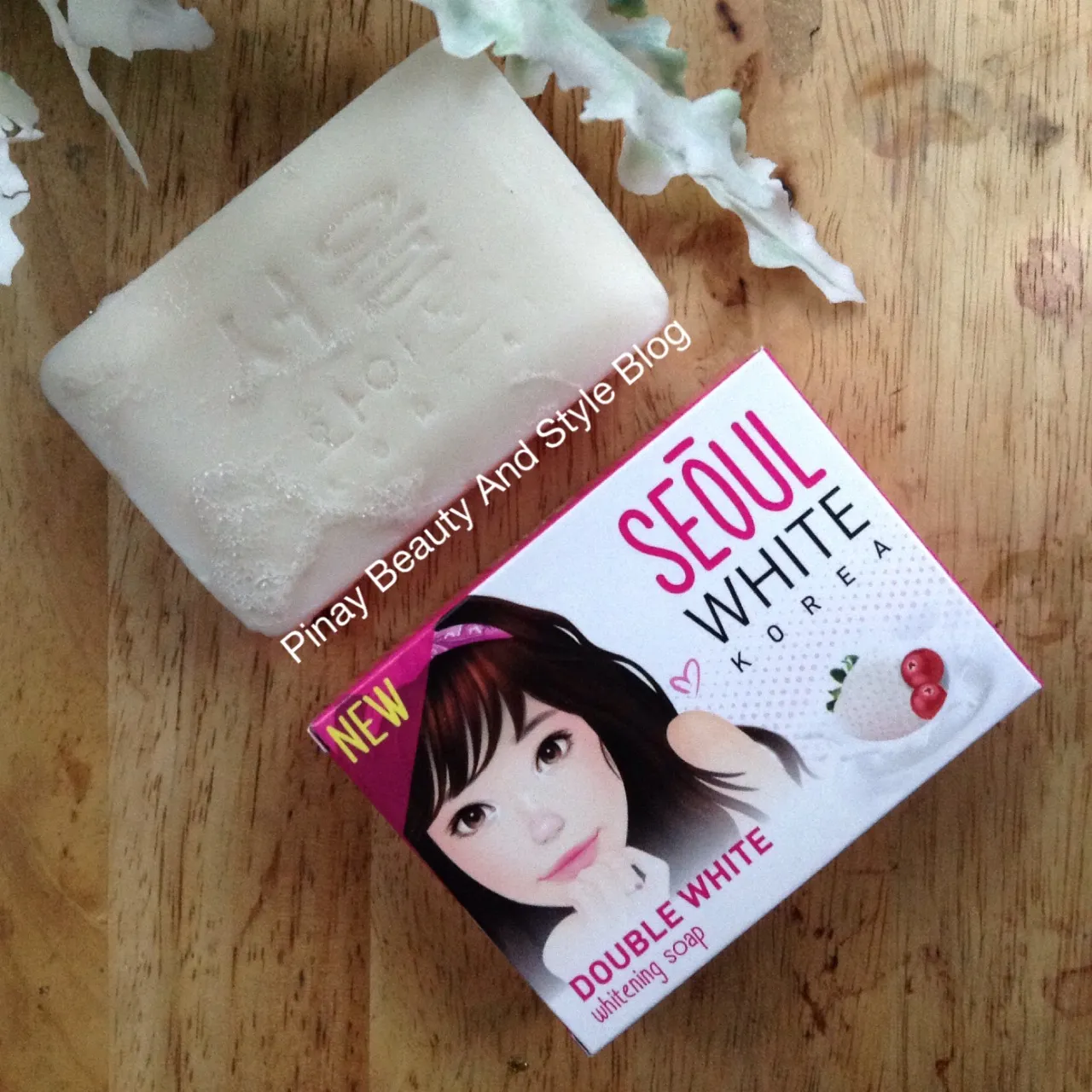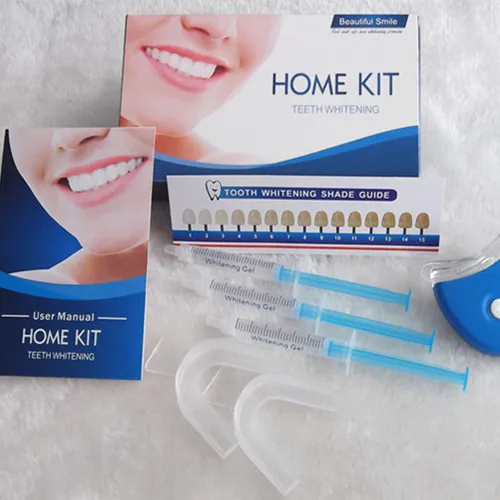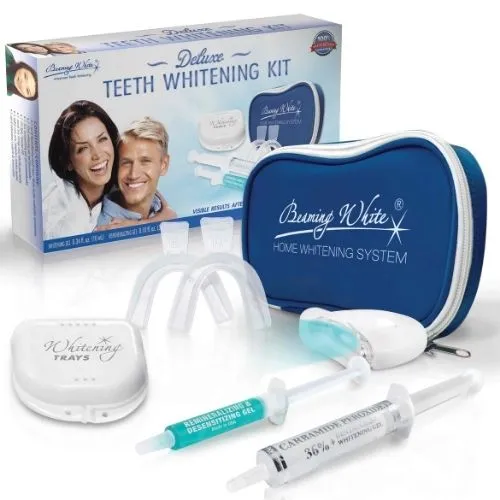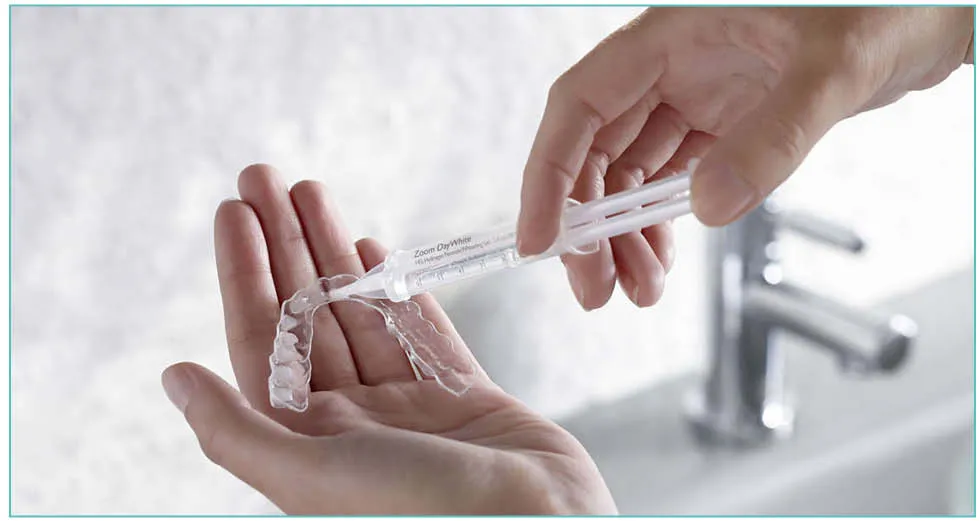Understanding At-Home Whitening
Achieving a brighter, more dazzling smile from the comfort of your home is now easier than ever. The realm of at-home teeth whitening has exploded with options, each promising a quick and effective solution to stained or discolored teeth. But before diving in, it’s important to understand the basics. At-home whitening involves using products containing bleaching agents, most commonly hydrogen peroxide or carbamide peroxide, to lighten the enamel of your teeth. These agents work by breaking down the stains that have accumulated over time, revealing a whiter, more vibrant smile. The effectiveness of these methods can vary depending on the type of stains, the concentration of the bleaching agent, and the duration of treatment. It’s also crucial to manage expectations; at-home methods generally offer more gradual results compared to professional treatments, but with consistency and the right approach, a significant improvement is achievable. Considering factors such as your current dental health and the specific products available can empower you to make informed choices for your teeth-whitening journey.
The Science Behind Teeth Whitening
The science behind teeth whitening is relatively straightforward but fascinating. The active ingredients, typically hydrogen peroxide or carbamide peroxide, penetrate the enamel and dentin of your teeth. These compounds then break down into oxygen molecules, which react with the stain molecules, effectively bleaching them. This oxidation process alters the structure of the stain molecules, making them less visible and resulting in a lighter tooth shade. The concentration of the bleaching agent, the duration of exposure, and the specific formulation all influence the whitening results. The more potent the concentration, the quicker the process, but it also increases the potential for side effects such as tooth sensitivity. It’s also vital to consider the type of stains. Extrinsic stains, which are surface stains caused by coffee, tea, or tobacco, are often easier to remove. Intrinsic stains, which are located within the tooth structure, may require stronger treatments or multiple sessions. Understanding these principles helps consumers choose the most appropriate and effective whitening method for their specific needs.
Common Causes of Tooth Discoloration

Tooth discoloration is a common issue, and understanding the causes can help in selecting the appropriate whitening strategy. The most common culprits are dietary habits. Beverages like coffee, tea, and red wine contain chromogens, pigments that attach to the enamel and cause staining. Smoking and tobacco use also contribute significantly, introducing tar and nicotine that discolor teeth over time. Aging is another factor; as we age, the enamel thins, revealing the underlying dentin, which is naturally more yellow. Certain medications, particularly tetracycline antibiotics taken during tooth development, can cause intrinsic staining. Poor oral hygiene, including inadequate brushing and flossing, allows plaque and tartar to build up, leading to discoloration. Genetic factors and certain medical conditions can also play a role. Identifying the primary causes of your tooth discoloration can help you choose the right whitening products and adjust your lifestyle to minimize future staining. For example, reducing consumption of staining foods or drinks, quitting smoking, and maintaining a consistent oral hygiene routine are crucial steps.
Effective At-Home Whitening Methods
Numerous at-home teeth whitening methods are available, each offering varying degrees of effectiveness and convenience. The best approach often depends on individual preferences, budget, and the severity of the discoloration. Whitening toothpastes, containing mild abrasives and bleaching agents, provide a gentle way to remove surface stains. Whitening strips, pre-filled with a peroxide-based gel, are a popular choice due to their ease of use and relatively quick results. At-home whitening trays, which are custom-fitted or pre-filled, offer a more concentrated whitening treatment. Other options include whitening pens, which allow for precise application, and whitening rinses that can be incorporated into your daily oral care routine. The effectiveness of each method can vary, and some may be more suitable for certain types of stains. Always follow the manufacturer’s instructions and consult your dentist if you have any concerns. Evaluating these options helps make the right choice.
Whitening Toothpastes
Whitening toothpastes offer a convenient and accessible way to gradually brighten your smile. These toothpastes typically contain mild abrasives, such as silica, that help to scrub away surface stains from teeth. They may also include low concentrations of bleaching agents, such as hydrogen peroxide, which further aids in lightening the enamel. While whitening toothpastes are generally safe for daily use, the abrasive nature of some formulations can potentially wear down enamel over time if used excessively or with too much pressure. The results are often subtle, and it may take several weeks or months to notice a visible difference. The effectiveness also depends on the type and severity of the stains. For those with sensitive teeth, it’s essential to choose a toothpaste specifically designed for sensitivity, as some whitening toothpastes can exacerbate this issue. Incorporating a whitening toothpaste into your daily routine is a simple yet effective step in maintaining a brighter smile.
How Whitening Toothpastes Work

Whitening toothpastes work through a combination of mechanical action and chemical reactions. The mild abrasives gently polish the tooth surface, removing extrinsic stains caused by food, drinks, and tobacco. Simultaneously, certain whitening toothpastes contain small amounts of bleaching agents, usually hydrogen peroxide or similar compounds. These agents penetrate the enamel, breaking down the stain molecules and lightening the tooth’s overall color. The effectiveness of these toothpastes is often limited to removing surface stains. They might not be as effective on deeper, intrinsic stains. However, the regular use of a whitening toothpaste can maintain the brightness of your smile. It’s a valuable tool for preventing new stains from setting in. The choice of toothpaste also matters. Opting for those with fluoride helps strengthen your enamel, and consulting with your dentist can provide personalized advice.
Choosing the Right Whitening Toothpaste
Selecting the right whitening toothpaste involves considering several factors. First, assess the abrasiveness of the toothpaste. Look for products with a low Relative Dentin Abrasivity (RDA) value to minimize potential damage to your enamel. Check the ingredients list. Look for fluoride to strengthen your teeth and any bleaching agents like hydrogen peroxide or carbamide peroxide. Consider your oral health. If you have sensitive teeth, choose a toothpaste specifically designed for sensitivity. Research different brands and read reviews to see what other users have experienced. Some whitening toothpastes may promise significant results, while others focus on maintenance. For optimal results, consider using a whitening toothpaste in conjunction with other methods, such as whitening strips. Make sure to consult with your dentist before making a final decision to ensure it aligns with your oral health needs and expectations.
Whitening Strips
Whitening strips have become a popular and convenient option for at-home teeth whitening. These thin, flexible strips are coated with a peroxide-based whitening gel and designed to be applied directly to the teeth. They are relatively easy to use and often provide noticeable results within a few weeks. The strips adhere to the teeth and stay in place for a specific duration, allowing the whitening agent to penetrate the enamel and break down stains. The concentration of the active ingredient, usually hydrogen peroxide, determines the speed and intensity of the whitening process. It’s essential to follow the manufacturer’s instructions carefully to ensure safety and effectiveness. One of the advantages of whitening strips is their portability and ease of integration into a daily routine. The results are typically more pronounced than with whitening toothpastes, making them a preferred choice for those seeking a more significant improvement in their smile’s appearance.
Using Whitening Strips Safely

Using whitening strips safely is crucial for achieving the desired results without causing harm to your teeth or gums. Always read and follow the product’s instructions meticulously. Apply the strips to clean, dry teeth, ensuring they are properly aligned and in contact with the tooth surfaces. Avoid excessive use, as overusing the strips can lead to increased tooth sensitivity and gum irritation. Adhere to the recommended treatment duration and frequency. If you experience any discomfort, such as sensitivity or burning sensations, discontinue use and consult your dentist. Avoid swallowing the whitening gel, and after removing the strips, rinse your mouth thoroughly. Be mindful of your diet during the treatment period, as certain foods and drinks can stain your teeth. Consider using a desensitizing toothpaste to alleviate any sensitivity. Combining these practices can help you get the most from whitening strips while protecting your oral health.
Best Whitening Strip Brands
Several brands have established themselves as leaders in the whitening strips market, offering a range of options to suit different needs and preferences. Crest Whitestrips is one of the most well-known and widely used brands. Their product line includes various formulations, from gentle options to more intensive treatments. They are recognized for their effectiveness and ease of use, and many users have reported noticeable results within a few weeks. Other reputable brands include Spotlight Oral Care and SmileDirectClub. These brands also offer effective strips that are easy to integrate into your daily routine. Choosing the right brand often involves considering your sensitivity levels, desired results, and budget. Researching different brands, reading reviews, and comparing active ingredients and concentrations can help you make an informed decision. Consulting with your dentist can also provide valuable insights and recommendations based on your specific dental needs.
At-Home Whitening Trays
At-home whitening trays provide a more customized and potentially more effective teeth-whitening approach. These trays are designed to hold a whitening gel against the teeth for a specific period. They come in two main forms: custom-fitted trays, made by a dentist to fit your mouth perfectly, and pre-filled or boil-and-bite trays. Custom trays offer the best fit and can minimize gel leakage, ensuring even whitening and reducing gum irritation. The pre-filled or boil-and-bite options are more readily available and affordable, but may not provide the same level of precision. The whitening gel used in trays typically contains a higher concentration of hydrogen peroxide than what is found in strips or toothpastes. This often results in quicker and more dramatic whitening effects. Using trays requires a bit more time and preparation, but many find the results well worth the effort. It’s important to follow your dentist’s instructions or the product’s guidelines for safe and effective use.
Custom vs. Pre-filled Whitening Trays

The choice between custom and pre-filled whitening trays depends on several factors, including your budget, the desired level of precision, and the time commitment. Custom trays, created by a dentist, offer the best fit. A perfect fit ensures the whitening gel is evenly distributed, minimizing contact with the gums and maximizing whitening results. These trays are made from impressions of your teeth, providing a snug and comfortable fit. Pre-filled trays are generally more affordable and convenient. They are often available over-the-counter and require less time and effort to use. However, the fit is less precise, which can lead to uneven whitening or gum irritation. Boil-and-bite trays are a middle ground option, where the user molds the tray to their teeth after softening it in hot water. Custom trays typically offer better results and are recommended if you seek the most effective and comfortable treatment. But pre-filled trays can be a practical choice for those seeking a more cost-effective solution.
How to Use Whitening Trays
Using whitening trays effectively involves a few key steps. Before applying the whitening gel, brush and floss your teeth thoroughly. Place a small amount of gel into each tooth impression in the tray, being careful not to overfill the tray. Insert the tray into your mouth, ensuring it fits snugly against your teeth. Follow the instructions for the wearing time, which typically ranges from 30 minutes to several hours, depending on the product’s concentration. Avoid eating or drinking anything during the treatment period. After removing the tray, rinse your mouth with water and clean the tray thoroughly. Consistent use, as directed by your dentist or product instructions, is crucial for achieving optimal results. Monitor your teeth for sensitivity and gum irritation. Consult with your dentist if you experience any problems. Using whitening trays requires discipline and attention to detail. This helps ensure a brighter, healthier smile.
Other At-Home Whitening Options
Beyond whitening toothpastes, strips, and trays, other at-home teeth whitening options can help enhance your smile. Whitening pens are a convenient option for touch-ups and targeted application. These pens contain a whitening gel and are easy to carry and use on the go. Whitening rinses, similar to mouthwash, contain mild bleaching agents that can help maintain the brightness of your teeth. While they are less potent than strips or trays, they can be incorporated into your daily routine for ongoing maintenance. The effectiveness of each option varies. The best choice depends on your needs and preferences. Exploring these diverse at-home teeth whitening methods can help you find the most effective and convenient way to brighten your smile. Consulting with your dentist can offer personalized advice and help you choose the right approach for your specific dental needs.
Whitening Pens

Whitening pens provide a convenient, portable, and targeted method for at-home teeth whitening. These pens typically contain a whitening gel that is applied directly to the teeth using a brush or applicator tip. They are ideal for touch-ups, spot treatments, and maintaining the brightness of your smile. The ease of use makes them suitable for use anytime and anywhere. The concentration of the whitening agent in pens is generally lower than in strips or trays, making them a gentler option. While the results may not be as dramatic, they can be effective for removing surface stains and enhancing the overall appearance of your teeth. Whitening pens are particularly useful for addressing stains in hard-to-reach areas or for people who want to control the whitening process precisely. It’s important to follow the manufacturer’s instructions. Be careful to avoid contact with the gums to prevent irritation. Incorporating whitening pens into your daily routine can be an easy way to boost your confidence and maintain a bright smile.
Whitening Rinses
Whitening rinses provide a gentle yet effective way to maintain and enhance your smile. These rinses are similar to regular mouthwash but contain mild bleaching agents, such as hydrogen peroxide. They help to remove surface stains and prevent new ones from forming. Whitening rinses can be seamlessly integrated into your daily oral care routine, offering a convenient way to brighten your teeth. The concentration of the whitening agent in rinses is generally lower than in other methods, making them a suitable option for sensitive teeth or those seeking a more gradual approach. They are an excellent choice for maintaining the results achieved through other whitening treatments. Using a whitening rinse requires rinsing your mouth thoroughly for the recommended duration. This is typically 60 seconds. Using them consistently can contribute to a brighter, healthier smile. Consult your dentist for personalized advice and choose a product that aligns with your oral health needs.
Important Considerations for At-Home Whitening
Before embarking on any at-home teeth whitening treatment, it’s important to consider several factors. Consult with your dentist to ensure that your teeth and gums are healthy and suitable for whitening. Evaluate your expectations realistically, as the results can vary depending on the product and the type of stains. Always follow the manufacturer’s instructions and avoid overusing any whitening product, which can lead to sensitivity and gum irritation. Consider the potential side effects, such as tooth sensitivity or gum inflammation, and have a plan for managing these issues. Be aware of your dietary habits, as certain foods and drinks can re-stain your teeth. If you have dental work, such as fillings, crowns, or veneers, understand that these will not whiten with the treatment. Making informed decisions and taking a cautious approach will help ensure a safe and successful teeth-whitening experience.
Potential Side Effects

While at-home teeth whitening methods are generally safe, potential side effects can occur. The most common side effects are tooth sensitivity and gum irritation. Tooth sensitivity can manifest as a sharp pain or discomfort when consuming hot or cold foods and drinks. It’s often temporary and can be managed with desensitizing toothpaste or by reducing the frequency of whitening treatments. Gum irritation may appear as redness, swelling, or tenderness of the gums. This is often caused by the whitening gel coming into contact with the gums and can be avoided by carefully following the product instructions. In rare cases, more severe side effects may occur. These include enamel damage or changes in the tooth structure. If you experience severe or persistent side effects, discontinue use immediately and consult your dentist. Understanding the potential risks and taking precautions can help minimize any adverse effects.
Who Should Avoid At-Home Whitening
Although at-home teeth whitening is generally safe for most people, some individuals should avoid it or consult with their dentist before beginning treatment. Those with sensitive teeth or gum disease may experience increased discomfort or irritation. Pregnant or breastfeeding women are often advised to postpone teeth whitening due to the limited research on the effects of bleaching agents on the developing fetus or infant. Individuals with extensive dental work, such as fillings, crowns, or veneers, should also be cautious. The whitening agents will only affect natural teeth, resulting in uneven results. Children and adolescents are generally advised to avoid at-home whitening until their permanent teeth have fully developed. Always consult your dentist if you have any concerns or underlying dental issues. Professional guidance ensures a safe and effective teeth-whitening experience.
Maintaining Your White Smile
Once you’ve achieved your desired level of brightness, maintaining your white smile involves a combination of good oral hygiene, mindful lifestyle choices, and occasional touch-ups. Continue brushing your teeth twice a day with a fluoride toothpaste, and floss daily to remove plaque and food particles that can lead to staining. Limit your consumption of staining foods and drinks, such as coffee, tea, red wine, and dark-colored berries. Consider using a straw when consuming these beverages to minimize their contact with your teeth. If you smoke or use tobacco products, quitting is one of the most impactful steps you can take to maintain your smile. Regular dental check-ups and cleanings are essential. Your dentist can remove any surface stains and provide professional advice on maintaining your results. Consider using a whitening toothpaste or performing occasional touch-up treatments with whitening strips or pens. Making these practices a part of your routine can help you enjoy a dazzling smile for years to come.
